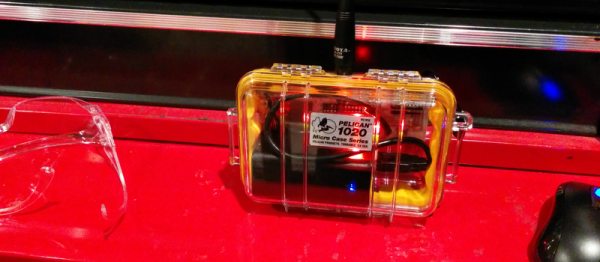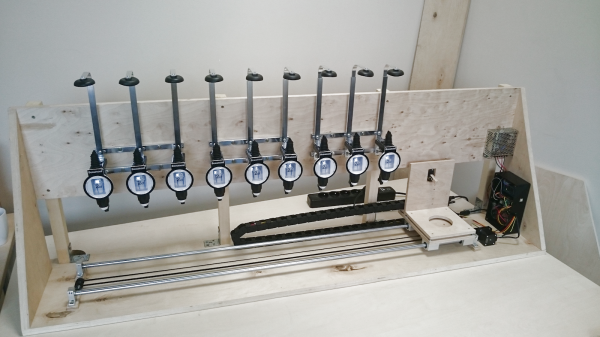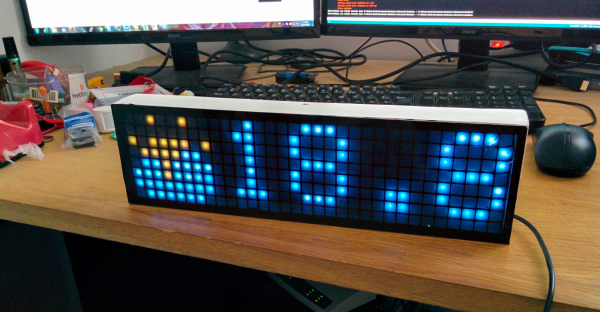Amateur radio operator [KE4FOX] wanted to build his own 2M fox hunt transmitter for use at conventions. It would be contained in a 1020 Pelican micro case and attached to a person who would walk around transmitting a signal, leaving the hams to track down the fox. The project uses a DRA818 VHF/UHF transceiver plugged into a low-pass filter combined with a hardware DTMF decoder, all controlled by an ATmega328P and powered by a 11.2 mAh battery.
[KE4FOX] also etched his own PCB, using the PCB toner transfer method, folding a sheet of transfer paper around the board to align both layers. Then he etched the board using cupric chloride. When assembling the board he realized he had made a terrible error, assuming the transceiver module’s pins went in the top layer when in fact they should have gone in the bottom layer. He solved this by soldering in the module in upside down.
He dropped the project into the 1020 and installed an SMA antenna. After he assembled the project he found out that the level shifter he used on the Arduino’s 5 V data didn’t work as expected and it was stuck at a single frequency. Something to work on for V2!
We publish a large number of amateur radio posts here on Hackaday, including fox hunting with Raspberry Pi and how to make a TDOA directional antenna.
[thanks, that Kat!]

















